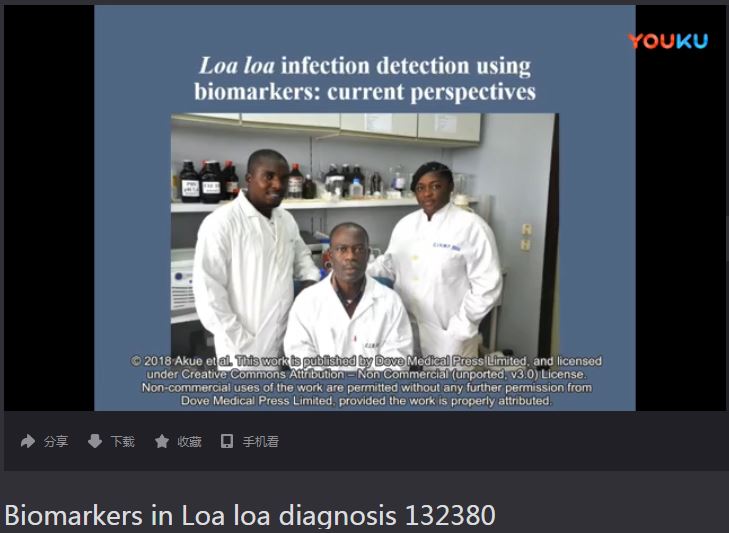108384
论文已发表
注册即可获取德孚的最新动态
IF 收录期刊
- 3.4 Breast Cancer (Dove Med Press)
- 3.2 Clin Epidemiol
- 2.6 Cancer Manag Res
- 2.9 Infect Drug Resist
- 3.7 Clin Interv Aging
- 5.1 Drug Des Dev Ther
- 3.1 Int J Chronic Obstr
- 6.6 Int J Nanomed
- 2.6 Int J Women's Health
- 2.9 Neuropsych Dis Treat
- 2.8 OncoTargets Ther
- 2.0 Patient Prefer Adher
- 2.2 Ther Clin Risk Manag
- 2.5 J Pain Res
- 3.0 Diabet Metab Synd Ob
- 3.2 Psychol Res Behav Ma
- 3.4 Nat Sci Sleep
- 1.8 Pharmgenomics Pers Med
- 2.0 Risk Manag Healthc Policy
- 4.1 J Inflamm Res
- 2.0 Int J Gen Med
- 3.4 J Hepatocell Carcinoma
- 3.0 J Asthma Allergy
- 2.2 Clin Cosmet Investig Dermatol
- 2.4 J Multidiscip Healthc

Loa loa infection detection using biomarkers: current perspectives
Authors Akue JP, Eyang-Assengone ER, Dieki R
Received 10 September 2017
Accepted for publication 21 December 2017
Published 3 April 2018 Volume 2018:9 Pages 43—48
DOI https://doi.org/10.2147/RRTM.S132380
Checked for plagiarism Yes
Review by Single-blind
Peer reviewers approved by Dr Colin Mak
Peer reviewer comments 2
Editor who approved publication: Dr Thomas Unnasch
Abstract: Loa loa is originally a
restricted filarial worm from central Africa and some west African countries.
However, numerous imported cases are being reported throughout the world due to
human movement. Traditionally, its diagnosis is based on identification of
microfilariae in the peripheral blood or the passage of the adult worm under
the conjunctiva. However, few patients have microfilariae in their peripheral
blood, while the majority of infected people are amicrofilaremic (without microfilariae
in their blood), despite clinical symptoms suggesting L. loa infection. This
situation suggests that diagnoses based on the presence of microfilariae in the
blood or the ocular passage of an adult worm, are not sensitive. Therefore, it
seems necessary to search for biomarkers to remedy this situation.
Furthermore, L. loa is a major obstacle in
the control of other filarial worms in areas where these filariae are
co-endemic. To develop a diagnostic tool based on a biomarker, several
approaches have been considered using antibodies, antigens or nucleic acid
detection. However, none of the diagnostic techniques in loiasis based on
biomarkers has reached the point of care as have microscopic detection of
microfilariae or observation of ocular passage of a worm.
Keywords: Loa loa , diagnosis, antibody,
antigen, DNA
